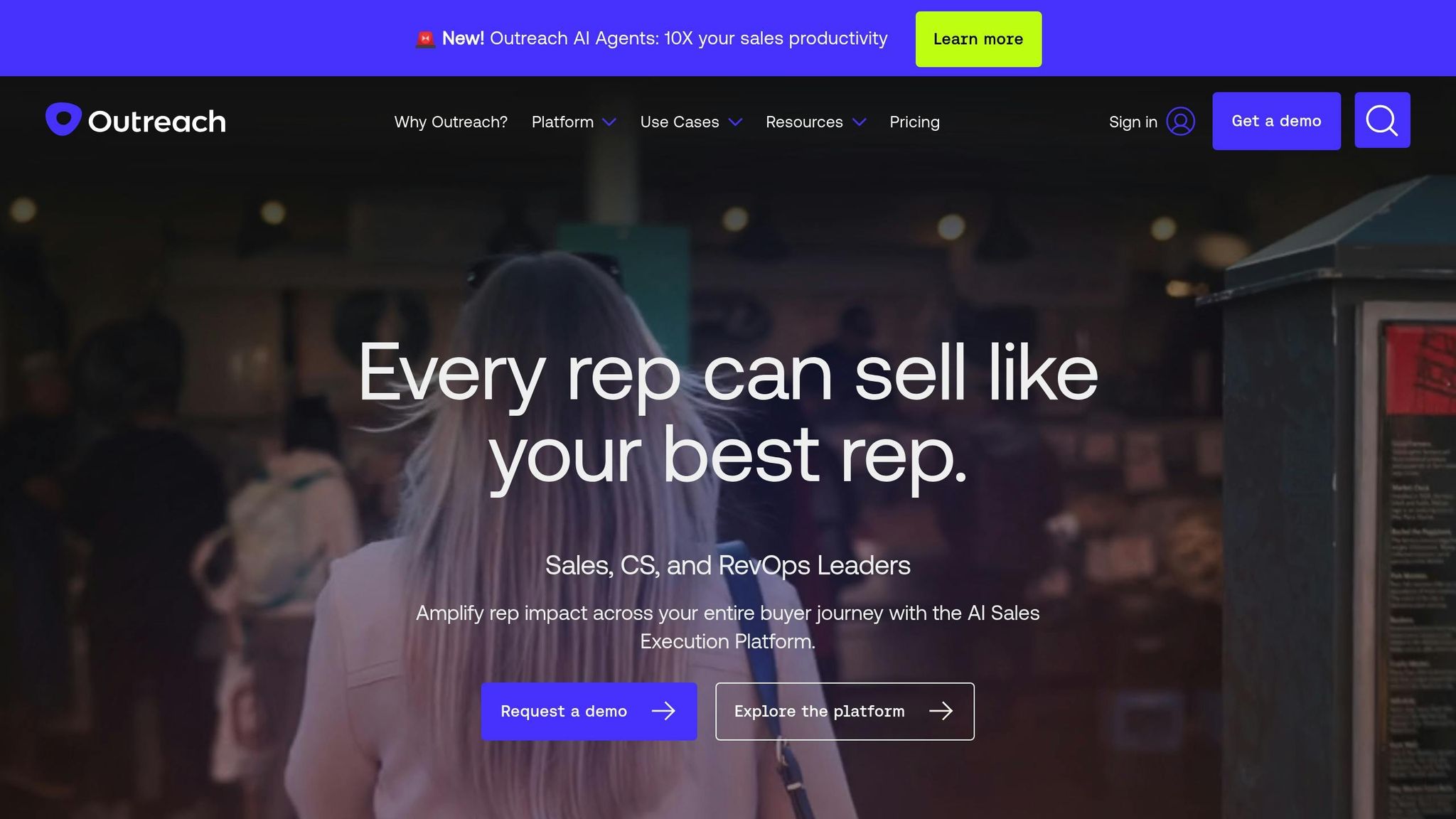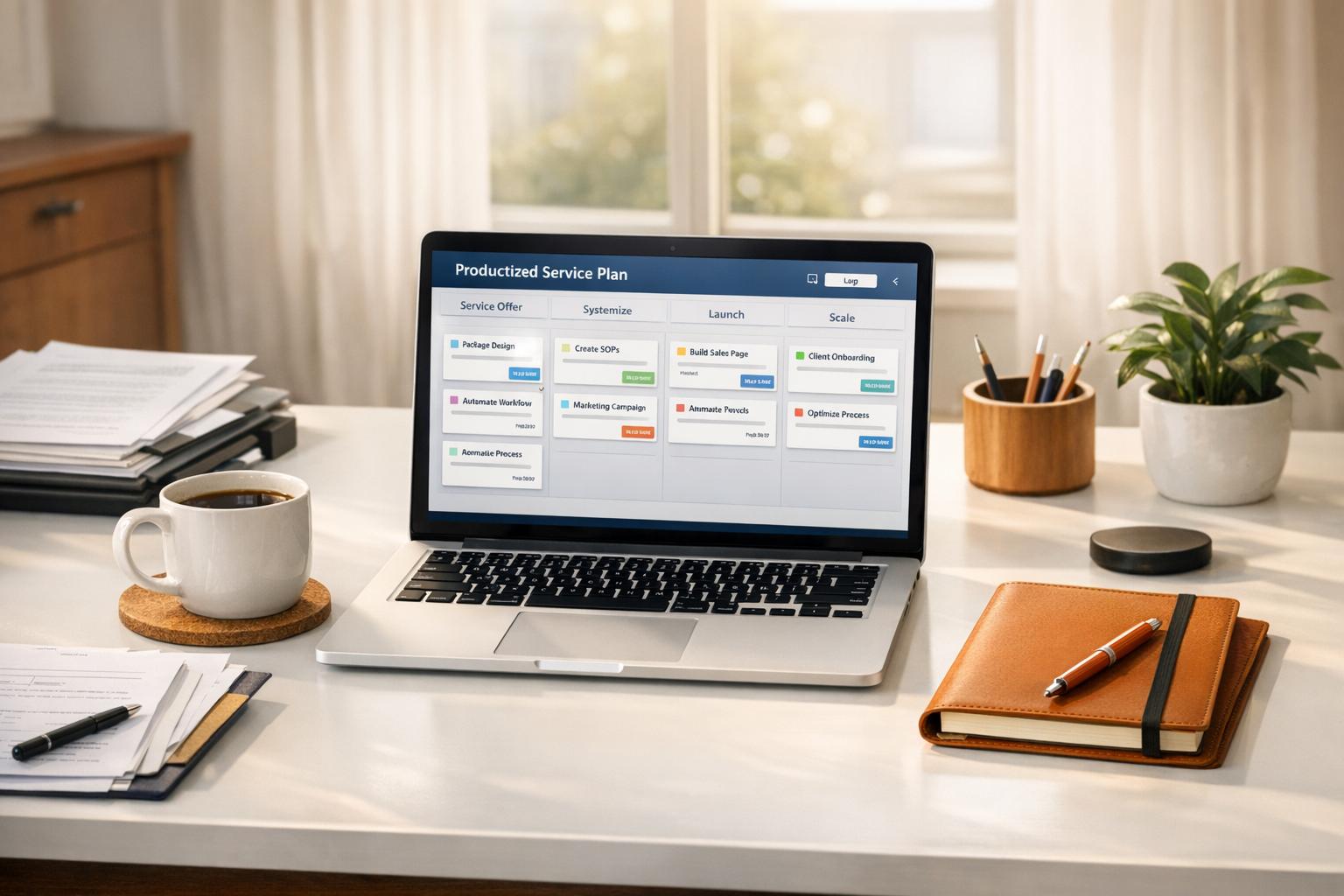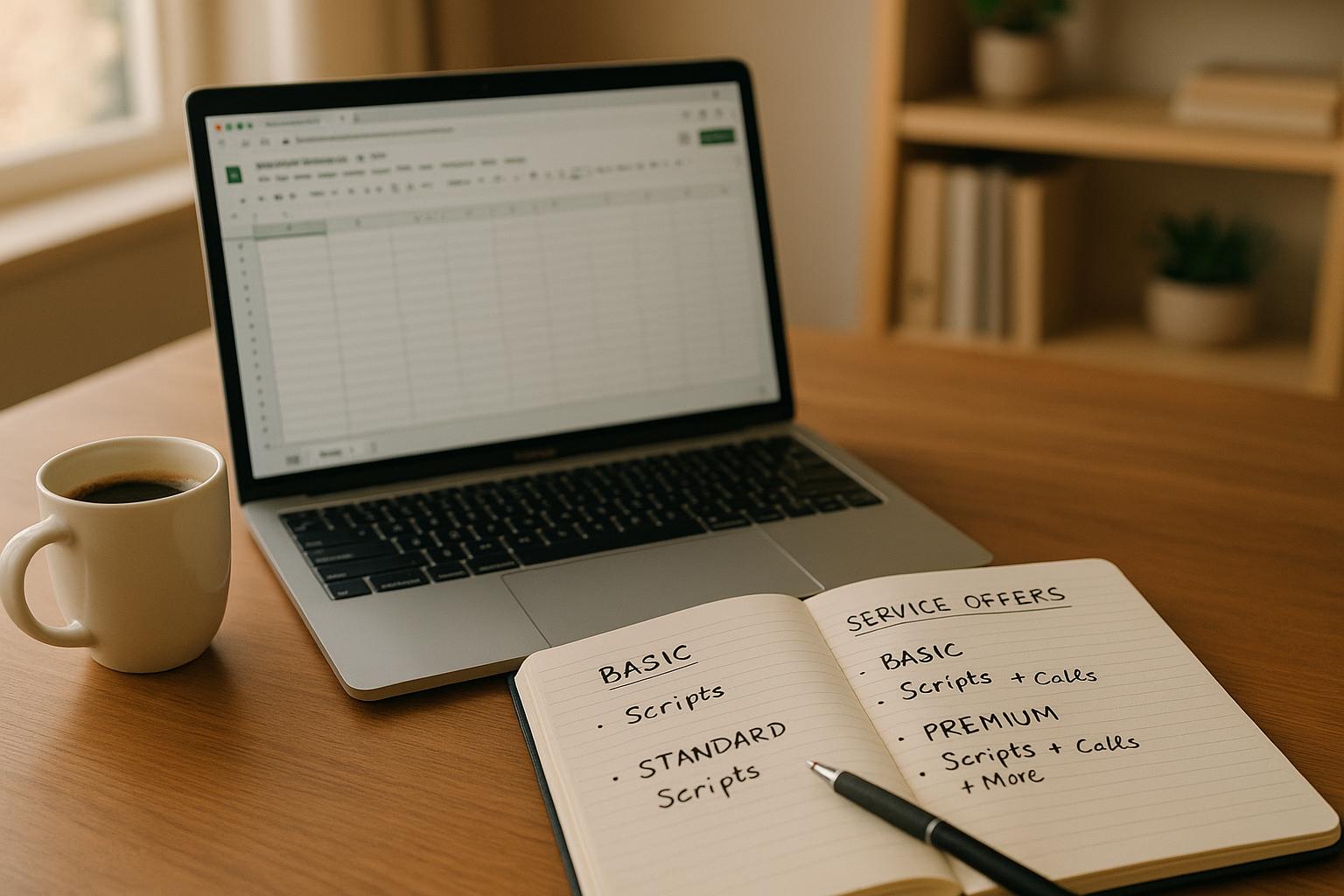
Want to land your first paying customers? Start with email. Here’s the exact email template and strategy I used to get my first 10 customers. Email marketing works because it’s direct, personal, and effective - delivering an average ROI of 4,200%. Here’s what you’ll learn:
- The email structure that converts readers into buyers.
- How to write subject lines that get opened (26% higher open rates with personalization).
- Personalization techniques to make your email stand out.
- How to prove your value using real results and examples.
- Follow-up strategies to close the deal (80% of sales need 5+ follow-ups).
Key stats to know:
- 47% of people open emails based on subject lines alone.
- Personalized emails see 6x higher transaction rates.
- Follow-ups can boost response rates by 22%.
Ready to craft emails that work? Let’s dive in.
How to get first customers for your business in 24 hours (using only email)
Why Early Customers Say Yes
Winning over early customers often comes down to forming genuine connections and clearly demonstrating value. In fact, 59% of consumers reported that marketing emails influenced their purchase decisions in 2020.
Building Trust Through Email
"If you can build trust and credibility with your reader, you'll be more likely to get a positive response to your outreach email".
Trust is the backbone of successful email marketing. Companies that excel in email outreach focus on creating meaningful and personalized experiences:
- Spotify tailors music recommendations, making users feel seen and understood.
- Adobe Creative Cloud shares practical tutorials and tips, establishing themselves as a go-to resource.
- Starbucks uses purchase data and app behavior to deliver offers that align with individual preferences.
Consistency also plays a major role. For example, TheSkimm sends its newsletter at the same time every morning, fostering reliability and trust among its readers.
These strategies help lay the groundwork for showcasing measurable results that highlight the value of your email efforts.
Using Results and Numbers to Prove Worth
Numbers don’t lie, and they can be a powerful tool in email marketing. Here’s how personalization impacts key metrics:
| Email Personalization Impact | Result |
|---|---|
| Subject Line Personalization | 26% higher open rates |
| Dynamic Content vs. Static Content | 139% increase in click rates |
| Conversion Rate | 6x higher transaction rates |
| ROI | 122% median return |
One standout example is Flight Centre, which combines email, social media, and backend data to create highly targeted customer segments. By tailoring offers to individual interests and behaviors, they automate journeys that deliver personalized vacation deals, dramatically increasing bookings.
But even the most data-driven strategy can falter if common email outreach mistakes aren’t avoided.
Email Outreach Mistakes to Avoid

Even a well-timed email can fall flat if certain pitfalls aren’t addressed. Here are common mistakes to steer clear of:
- Jumping straight into a hard sell without building rapport.
- Using generic, one-size-fits-all messaging instead of personalized content.
- Ignoring time zones and optimal sending windows.
- Skipping follow-ups - most sales require at least five follow-up emails.
"When you provide something valuable in your initial email, it sets the stage for a positive connection with your prospect. This connection makes them more likely to respond to your follow-ups, as they appreciate the value you've shared".
The Email Template That Worked
After analyzing countless cold emails, here are the key components that helped me land my first 10 paying customers.
Writing Subject Lines That Get Opened
Nearly half - 47% - of email recipients decide to open an email based solely on the subject line. Here's a formula that works:
[Name], quick question about [specific pain point] at [company] Example: "Sarah, quick question about customer retention at Acme Inc."
This approach works because it feels personal, addresses a specific issue, and avoids the typical spammy language that turns people off.
How to Start Your Email
Once you've hooked them with your subject line, the first few lines of your email need to establish immediate relevance:
Hi [Name], I noticed [specific observation about their business/recent company news/mutual connection]. Given your role, I thought you'd be interested in how we helped [similar company] achieve [result]. This opening shows you've done your homework and makes the email feel tailored rather than generic.
Explaining What You Offer
Keep your value proposition clear and concise:
We help [target audience] to [achieve specific outcome] by [unique approach/method]. For example, we recently worked with a company similar to yours and helped them [specific measurable result] in just [timeframe]. This structure makes it easy for the recipient to understand what you bring to the table while highlighting a tangible benefit.
Adding Proof That You Can Deliver
Proof builds trust and moves prospects closer to saying yes. Use specific examples to back up your claims:
| Proof Element | Example |
|---|---|
| Specific Results | "Increased conversion rates by 32% in 60 days" |
| Time Frame | "Implementation completed within 2 weeks" |
| Similar Client | "Recently helped Company X in your industry" |
These details show you're not just making promises - you've delivered results before.
Getting Recipients to Take Action
End your email with a clear and simple call to action:
Would you be open to a 15-minute call this week to explore if we could help [Company Name] achieve similar results? I have time available: - Tuesday at 2:00 PM EST - Wednesday at 11:00 AM EST - Thursday at 4:00 PM EST Which time works best for a brief conversation? Best regards, [Your Name] [Your Role] [Company Name] [Phone Number] This closing combines clarity with a sense of urgency, making it easy for the recipient to take the next step.
sbb-itb-08dd11e
Making the Template Work for Your Business
B2B vs B2C Email Differences
While the core email template remains consistent, the approach shifts significantly depending on whether you're targeting B2B or B2C audiences. B2B emails should emphasize business value and measurable outcomes like ROI, while B2C emails aim to forge emotional connections and highlight instant benefits.
| Element | B2B Adaptation | B2C Adaptation |
|---|---|---|
| Subject Line | "John, discover how to cut procurement costs effectively" | "Sarah, enjoy a 24-hour flash sale just for you!" |
| Opening | Reference industry challenges or recent company news | Focus on immediate personal benefits |
| Value Proposition | Highlight efficiency, ROI, and business metrics | Emphasize emotional appeal and quick rewards |
| Proof Points | Share case studies and measurable business results | Use customer testimonials and social proof |
| Call to Action | Encourage scheduling a consultation or discovery call | Include a direct purchase link or limited-time offer |
Personalized subject lines are critical, but the tone should match the audience. B2B emails benefit from a professional, results-driven tone, while B2C emails thrive on emotional and relatable messaging. As Bryan Kramer aptly puts it, "There is no more B2B or B2C. It's H2H: Human to Human".
The approach also shifts when you're marketing services instead of products.
Products vs Services Email Changes
When marketing services, it's essential to shift the focus from features to outcomes. Here's how:
- Replace product descriptions with stories of client success.
- Highlight how your service solves problems, rather than listing technical specifications.
- Offer consultations instead of product demos to build trust and understanding.
- Showcase specific results achieved for similar clients to establish credibility.
"People want to feel seen, heard, and understood in the emails reps send, even if they've never met before."
– Angela Garinger, VP of Business Development, Outreach
This shift creates a more relatable and results-driven narrative, especially for service-based businesses.
Adjusting for Different Markets
Customizing your email template for specific markets is another key to success. Research shows that while 95% of email marketers use personalization, only 3% incorporate real-time content. To stand out, consider these adjustments:
- Tailor your messaging to address sector-specific challenges and adjust the tone to suit regional preferences.
- Ensure your emails are mobile-responsive, as 81% of emails are opened on mobile devices.
- Account for time zones and industry-specific peak engagement times to optimize delivery.
"When personalization is done right, it's something subscribers are more likely to engage with. They're more likely to click on a product, browse your website, and make a purchase."
– Tracie Pang, Litmus Email Marketing Manager
Ultimately, understanding the unique needs of each market is the cornerstone of effective email outreach. Segmented email campaigns, for example, achieve 14.31% higher open rates compared to generic ones. This underscores the importance of tailoring your strategy to resonate with your audience.
Measuring and Improving Email Results
Email Success Measurements
When it comes to measuring the success of your cold email campaigns, focus on these key metrics:
| Metric | Target Rate | What It Means |
|---|---|---|
| Open Rate | 60%+ | Your subject line grabs attention and sparks interest |
| Reply Rate | 20%+ | Your message resonates with recipients |
| Bounce Rate | <3% | Your email list is accurate and up-to-date |
| Conversion Rate | 1-5% | Prospects are becoming paying customers |
| Unsubscribe Rate | <10% | Your targeting and email frequency align with audience expectations |
Rather than getting distracted by vanity metrics like open rates alone, prioritize tracking meaningful outcomes like positive replies and conversions. These are the metrics that directly impact your revenue.
Once you’ve established a baseline, it’s time to refine your approach by testing different email elements.
Testing Different Email Versions
Surprisingly, 39% of brands skip email testing altogether. Don’t make the same mistake. A/B testing is a powerful way to fine-tune your emails for better results. Here are some elements worth experimenting with:
- Subject Lines
Personalized subject lines can boost open rates by 14%. Test variations that:- Include the recipient’s name
- Mention their company
- Emphasize specific benefits
- Add a sense of urgency
- Call-to-Action (CTA) Elements
Small tweaks to your CTA can make a big difference. For instance, using buttons instead of text links has been shown to increase click-through rates by 27%. Experiment with:- Button placement versus text links
- Action-driven copy
- Different colors and designs
- Where the CTA appears in the email
- Email Content
Test one change at a time to pinpoint what works. Research shows that positive language can improve conversion rates by 22%.
Follow-up Email Best Practices
Did you know that 80% of sales require at least five follow-ups? Crafting a thoughtful follow-up sequence can dramatically improve your chances of success. Here’s a simple structure to follow:
| Timing | Purpose | Key Focus |
|---|---|---|
| 24 hours | Initial thank you | Acknowledge receipt of their response |
| 48 hours | Address urgent matters | Follow up on any immediate concerns |
| 1-2 weeks | Schedule next steps | Propose a meeting or next action |
| 3 months | Maintain the relationship | Keep the connection warm over time |
Keep your follow-ups concise and to the point. In fact, a single follow-up can increase response rates by 22%.
"Your email should not take more than 30 seconds to read. Anything longer and they are most likely to lose interest." – Dimitry, Soar
Conclusion: Next Steps for Using This Template
Now that you have a proven email template and key metrics, it’s time to take action and land your first 10 paying customers. Here's a quick breakdown of the steps to guide you:
| Implementation Step | Key Action | Expected Outcome |
|---|---|---|
| Template Customization | Personalize subject lines and value propositions | 29-50% increase in open rates |
| Audience Segmentation | Group recipients by industry and needs | More targeted, relevant messaging |
| Testing Setup | Create A/B versions of key elements | Data-driven optimization |
| Follow-up System | Schedule 5 follow-ups over 60 days | Up to 22% higher conversion rate |
Kick things off by tailoring the template to fit your business. Focus on crafting subject lines and value propositions that resonate with your audience. Don’t forget to test your emails across devices - mobile optimization is a must since most professionals check emails on their phones.
Next, segment your audience thoughtfully. Grouping recipients by industry or specific needs allows you to deliver messaging that feels personal and relevant. This level of precision can make all the difference.
Set up A/B testing for key elements like subject lines, call-to-actions, or even the email layout. The insights you gain will help you refine and optimize your campaigns for better results.
Finally, commit to a consistent follow-up strategy. Research shows that 80% of non-routine sales happen after at least five touchpoints. Scheduling follow-ups over a 60-day period ensures you stay top-of-mind while giving prospects the time they need to make a decision.
Keep an eye on your response data and adjust your approach as needed. With persistence and careful refinement, you’ll be well on your way to converting prospects into paying customers.
FAQs
How can I personalize my emails to boost open and conversion rates?
To create emails that truly resonate with your audience, start by gathering essential details like their name, interests, or preferences during the signup process. These small yet powerful insights allow you to craft messages that feel tailored specifically to them, fostering a sense of connection and trust.
Incorporate personalized subject lines and reference past interactions or expressed preferences within your email content. These touches can dramatically boost engagement, leading to higher open and conversion rates compared to one-size-fits-all emails. When your audience feels seen and valued, they’re much more likely to respond positively.
What mistakes should I avoid when sending cold emails to potential customers?
When you're crafting cold emails, there are a few missteps that can seriously hurt your chances of success. One of the biggest is not personalizing your emails. A generic, one-size-fits-all message can come across as spammy, making it far less likely to get a response. Instead, take a moment to tailor your email to the recipient - mention their specific needs or interests to show you’ve done your homework.
Another common mistake is using pushy, overly sales-driven language. Rather than focusing entirely on your product or service, shift the spotlight to how you can solve a problem or bring value to the recipient's business. And here's a key tip: keep it short and focused. Long-winded emails with multiple calls-to-action can overwhelm the reader and make your message less effective.
By personalizing your outreach, focusing on the recipient's needs, and keeping your message clear and concise, you'll have a much better chance of catching their attention and turning them into a customer.
How can I track the success of my email marketing campaigns and make them more effective over time?
To gauge how well your email marketing campaigns are performing, keep an eye on key metrics like open rates, click-through rates (CTR), conversion rates, and bounce rates. Open rates tell you how many recipients actually opened your email, while CTR indicates how many clicked on the links inside. Conversion rates measure the percentage of people who took a desired action, such as making a purchase, and bounce rates highlight any delivery issues with your emails.
Regularly reviewing these metrics can help you fine-tune your approach. Incorporate strategies like personalization, A/B testing for subject lines and email content, and audience segmentation to enhance engagement. For instance, personalized emails often lead to higher open rates, and segmented campaigns can generate more revenue. The key is to keep testing and adjusting to ensure your campaigns stay effective over time.
Related posts
Get the newest tips and tricks of starting your business!


